
Expert dental tips, news, and smile advice

Expert dental tips, news, and smile advice
It was Halloween night in Rancho Bernardo. The cul-de-sac buzzed with laughter, porch lights, and the faint scent of pumpkin candles. Children in glittering costumes darted across the sidewalks, their laughter echoing under the glow of jack-o’-lanterns.
Emma, a mom of two, loved every bit of it—the decorations, the excitement, the sugar-fueled joy. But later that night, when her seven-year-old son, Caleb, dumped his overflowing bucket of candy onto the kitchen floor, her smile faltered.
Chocolate bars, sticky caramels, sour gummies—piled high like a tiny mountain of temptation. Caleb’s eyes lit up. “Just one more, Mom?”
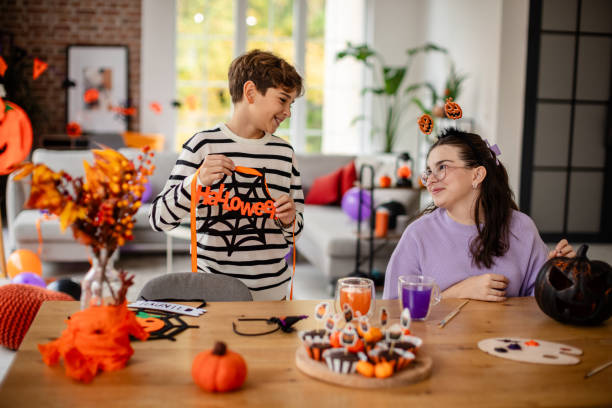
Emma laughed, but a thought flickered through her mind: How much of this sugar is too much? She’d always heard that Halloween could be tough on kids’ teeth, but it had never really hit home until that moment.
The next morning, when Caleb complained that his tooth hurt when he bit down, Emma’s heart sank. “Did the candy do this already?” she wondered. That’s when she decided to call Elegant Family & Pediatric Dentistry, just to be safe.
When Emma and Caleb walked into the office, the waiting room was calm and inviting—bright, warm, and filled with the gentle hum of happy chatter. Dr. Javidi greeted them with a reassuring smile.
He examined Caleb’s teeth and quickly noticed tenderness around one of his new molars—nothing serious, just part of growing up. But the moment became a perfect opportunity to explain something every parent should know: the real scare of Halloween isn’t ghosts or goblins—it’s the sticky, sugary residue left behind on little teeth.
“Sugar itself isn’t the enemy,” he explained gently. “It’s what happens after sugar lingers on teeth that causes trouble.”
Bacteria in the mouth feed on leftover sugars, producing acids that wear away enamel. Sticky candies—like taffy, caramel, and gummies—cling to tooth surfaces long after the candy is gone. Sour candies are double trouble, with acids that soften enamel and make it easier for decay to form.
But he also had good news: “You don’t have to ban candy,” he said with a grin. “You just have to outsmart it.”

Emma was relieved to learn that dentists don’t expect families to have a candy-free Halloween. Instead, they recommend balance and timing.
Dr. Javidi shared a few evidence-based tricks that many parents find surprisingly easy to follow:
“Think of Halloween as a teaching opportunity,” Dr. Javidi said. “Kids can still enjoy their treats while learning what keeps their smiles healthy.”
During Caleb’s exam, Dr. Parsafar joined in, showing him a large tooth model and a toothbrush. She let him “brush off the pretend sugar,” turning learning into play.
Emma smiled as Caleb giggled, brushing away imaginary caramel. He wasn’t scared or anxious—he was proud.
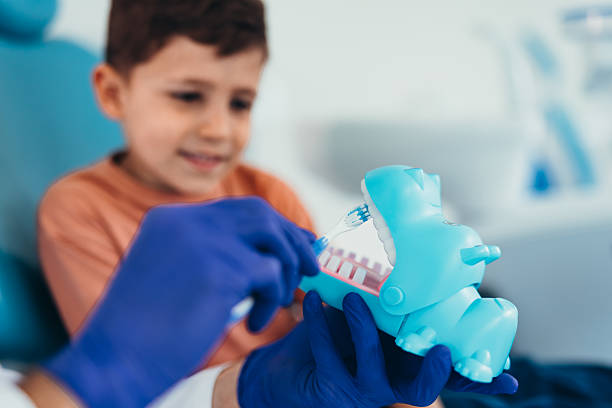
Later, Emma said, “It wasn’t just a checkup. It was like a mini life lesson for him—and for me.”
That’s the philosophy at Elegant Family & Pediatric Dentistry—to make dental care a positive, empowering experience from the very start. Parents often say it changes how their kids view the dentist entirely.
If your child—or you—notice any post-Halloween tooth sensitivity or discomfort, don’t wait until it worsens. Our team makes same-day visits simple and stress-free. Schedule your preventive or emergency visit today.
Discover the best solution for your smile at Elegant Family & Pediatric Dentistry. Schedule your appointment now and let our expert team guide you to a confident, healthy smile.
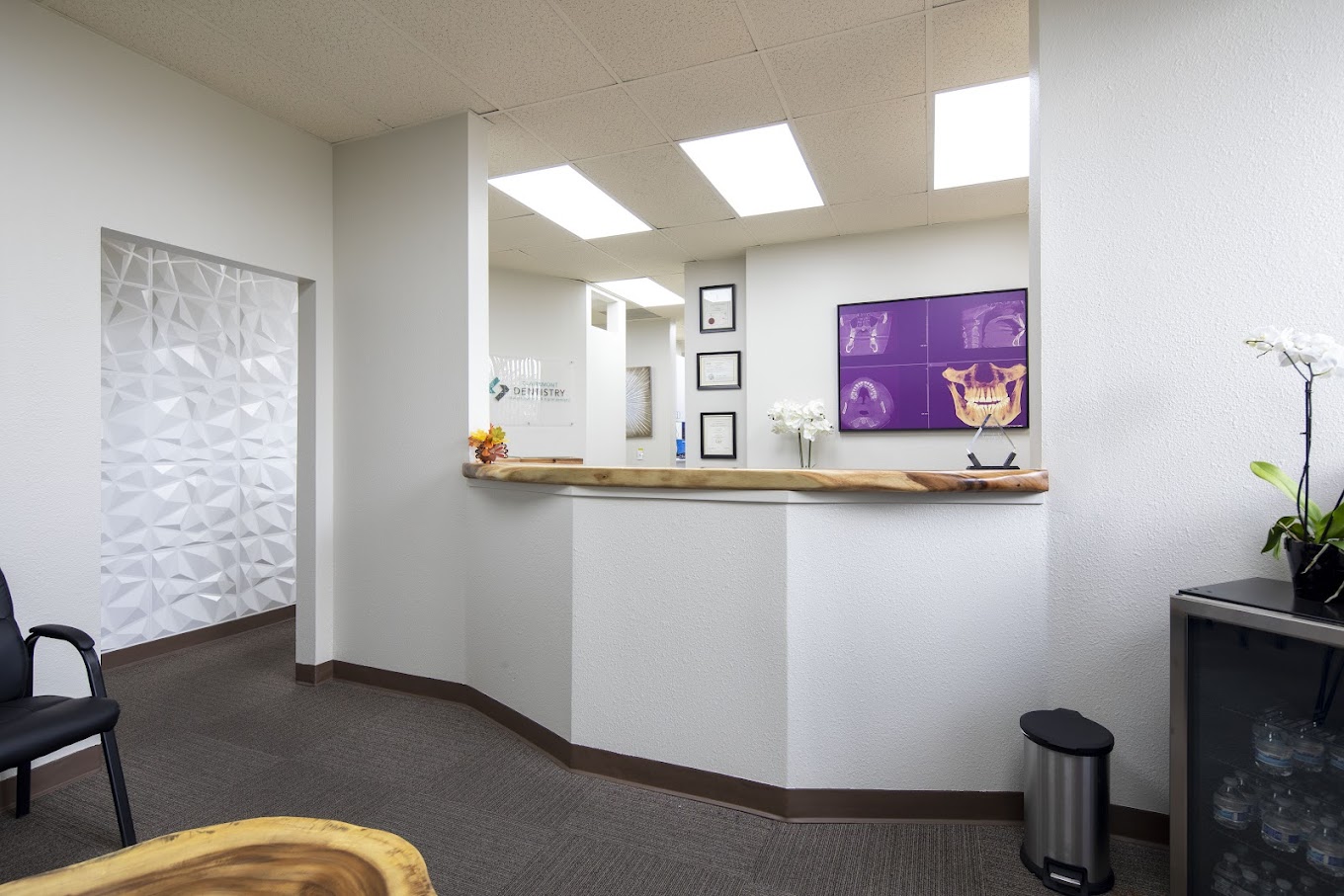
Halloween isn’t just for kids. Many parents sneak a few “fun-size” treats themselves—or sip on pumpkin spice lattes and red wine throughout the season.
The problem? Adults aren’t immune to candy damage either.
Sticky sweets and sugary drinks can trigger sensitivity, especially if gums have receded slightly with age. And for those with fillings or dental work, sticky candies can actually dislodge restorations.
“Adults get candy cavities too,” Dr. Parsafar added with a laugh. “We just tend to call them ‘stress snacks.’”
The good news is that the same prevention tips apply: rinse with water after treats, don’t brush immediately after acidic foods (to protect enamel), and keep regular cleanings to remove any lingering plaque.
If staining from fall favorites like coffee or wine is bothering you, a professional whitening treatment can restore brightness safely and quickly—just in time for holiday photos.
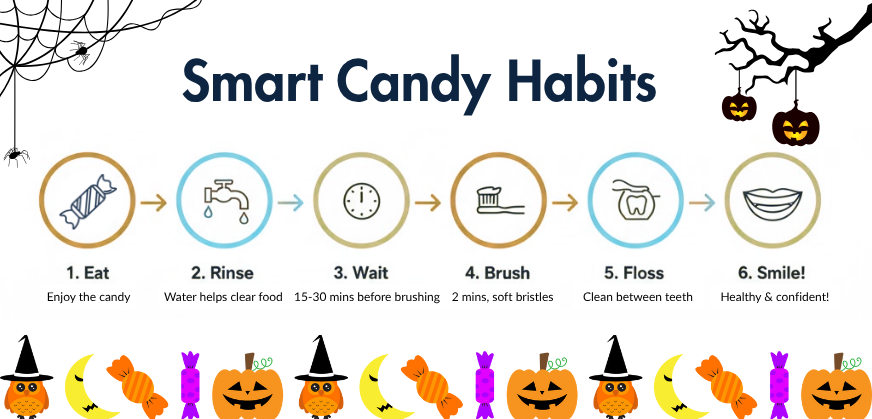
Over the next week, Emma turned candy sorting into a family event. Caleb got to keep a few favorites, donate extras, and learn which candies were “sticky villains.” His little sister, Zoe, got a new toothbrush decorated with tiny pumpkins—and proudly brushed beside her big brother every night.
“It stopped being about saying no,” Emma said. “It became about making smart choices together.”
That’s exactly what preventive dentistry is about: giving families tools, not guilt.
At Elegant Family & Pediatric Dentistry, that philosophy carries through every service—from infant checkups to adult smile makeovers. The goal isn’t perfection; it’s partnership.
Dr. Javidi often reminds parents that Halloween comes once a year—but the habits kids build now will last a lifetime.
“Cavities don’t happen overnight,” he said. “They develop over time from repeated exposure. So every small choice—a sip of water, a good brushing, a regular cleaning—adds up.”
And prevention doesn’t have to be complicated. Most families find success when they focus on three essentials:
When families see dental care as part of daily life instead of an occasional chore, smiles become stronger, brighter, and more confident.
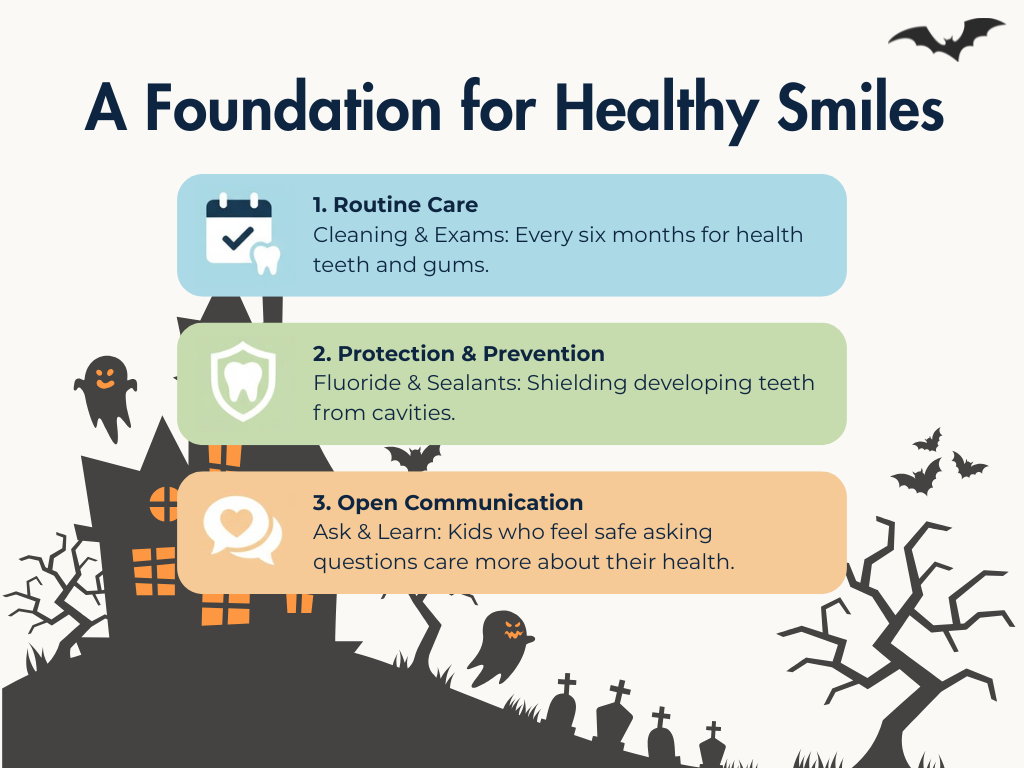
That Halloween, Emma didn’t ban candy. Instead, she turned it into a learning experience—and a family memory.
Caleb and Zoe still filled their buckets with treats, but they also filled their bathroom with laughter during nightly brushing sessions. Emma stopped feeling like the “no candy mom” and started feeling like the confident parent who had found balance.
It wasn’t about saying no—it was about saying yes to a healthier way to enjoy life’s sweetest moments.
Halloween should be full of smiles—not dental worries. Whether you’re a parent managing candy season or an adult who’s ready for a brighter smile, our team is here to help you protect what matters most. Book your post-Halloween cleaning or consultation today and keep those smiles glowing long after the candy’s gone.
1. Is it okay for my child to eat candy after Halloween?
Yes! Just limit candy to short, intentional times (ideally after meals). Encourage brushing and rinsing afterward to protect enamel.
2. Which candies are worst for teeth?
Sticky, hard, and sour candies cause the most harm. Chocolate is less damaging since it washes off teeth more easily.
3. Should I schedule a cleaning after Halloween?
It’s a great idea, especially if your child is due for one. Post-Halloween visits help catch early decay and reset healthy habits before the holidays.
4. My child’s tooth hurts after eating candy—what should I do?
Tooth pain can signal sensitivity, a cavity, or a loose baby tooth. Call our office for an exam so we can identify the cause and relieve discomfort quickly.
5. How can fluoride and sealants help?
Fluoride strengthens enamel to resist acid, and sealants act like invisible shields on molars—especially valuable during candy season.
6. What if I have sensitive teeth after sweets?
Sensitivity in adults is common after sugar or acidic treats. Try desensitizing toothpaste, avoid brushing immediately after sweets, and schedule a checkup if it persists.